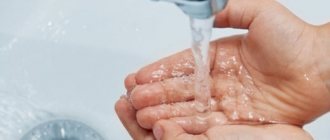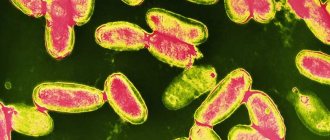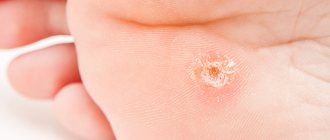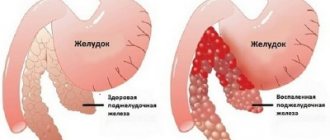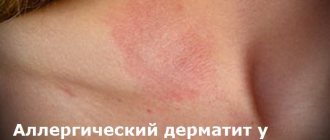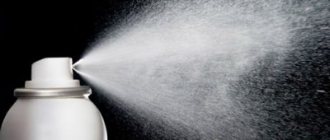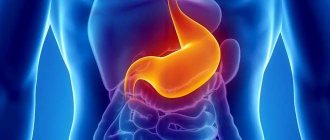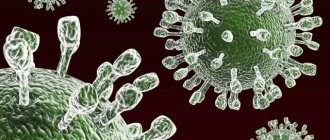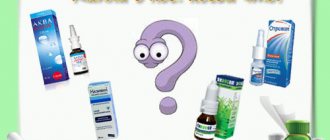Every day, each of us is exposed to the danger of getting a burn to the skin or mucous membranes. Any careless movement - even an iron or a hot kettle causes serious physical suffering and injury to a person. No less dangerous are the rays of the sun, chemicals, and high electrical voltage.
These injuries are dangerous because they occur unexpectedly, because a person does not expect them at all.
Children are more at risk of getting burns. Therefore, it is important for adults to inform them how to avoid injury and tell them about providing first aid to a burn victim. This needs to be done both at home and at school during life safety lessons.
Of course, no adult can teach a child if he himself does not know the rules of first aid for burns. With the help of our article you will be able to eliminate all the gaps on this topic.
Types of burns
You can get a burn in several ways, which is why there are several types of burn injuries to the skin.
- Thermal (thermal) burns - appear as a result of exposure of human skin to fire, steam, hot liquids or objects.
- Electrical burns—occur from contact with electrical appliances or lightning.
- Chemical burns are close contact with chemicals that have local irritant properties.
- Radiation burns – appear after prolonged contact with ultraviolet rays (sunlight, solarium).
Regardless of the origin of the burn, when the injury occurs, a violation of the integrity and irritation of the skin occurs, which causes severe pain in the person, redness of the skin in the area of the injury, followed by the formation of blisters (2nd degree).
How to treat burns at home
- Stop contact with the burning factor. Put out the flames on your clothes and move away from the fire. If you are burned by boiling water, immediately remove clothing in contact with the body. Throw a hot object.
- Cool the burnt surface. It is best to do this under running water at a temperature of 10-18 degrees. You can immerse the limb in a container of water or apply a damp cloth. You need to cool for 5 to 10 minutes; in case of a chemical burn, rinse with running water for up to 20 minutes (except for burns with quicklime). Cooling has an analgesic effect and also prevents the spread of heating of healthy tissue at the border of the burn.
- Anesthesia. For severe pain, you can take paracetamol, ibuprofen, ketanov, analgin, and other analgesics.
- Local treatment. The main goal in treating burns is to protect the surface from germs, relieve pain and speed up the restoration of the damaged layer of skin. They simply use sterile wipes, special wipes for burns, sprays and ointments that promote healing.
- General treatment. It would be a good idea to take restorative medications and also follow a proper diet to ensure that the burn heals faster and without consequences. It is recommended to increase the amount of protein in the diet (meat, fish, dairy products), as well as vegetables and fruits rich in vitamins. Additionally, you can take vitamin C and Aevit. It is recommended to drink more.
Degrees of burns
There are many reasons that can cause a skin burn, but before you begin treatment, you need to determine how severe the burn is. All burns, regardless of the cause of their occurrence, are divided into first, second and third degree burns.
First degree burn
Minor damage to the skin due to high temperatures is classified as first degree burns. Such a burn on the skin only causes redness and pain. A first-degree burn does not require hospitalization and can be successfully treated at home.
Second degree burn
Second degree burns penetrate deeper into the skin. This type of burn injury is characterized not only by redness of the skin, but also by the appearance of blisters, which are filled with clear liquid inside. Most often, 2nd degree burns occur when scalded with boiling water, prolonged exposure to the sun, or contact with chemicals. If a 2nd degree burn is extensive, then a large loss of fluid occurs in the human body.
After such burns, scars may remain on the skin. Important: If a 2nd degree burn is larger in area than a person’s palm or is on the face, you should definitely see a doctor, this will help avoid cosmetic problems in the future. Treatment of 2nd degree burns is carried out at home and is successfully treated with pharmaceutical drugs in combination with traditional medicine.
Third degree burn
Third degree burns are quite dangerous. When they are received, the skin is destroyed, subcutaneous tissues and nerve endings are affected. Such burns can occur as a result of contact with chemicals, oily substances, electrical appliances or lightning. The condition of a victim with 3rd degree burns can be either moderate or severe. Treatment is only inpatient. Usually, after receiving 3rd degree burns, a person needs skin grafts.
In the case when a burn damages 20% - 40% of a person’s skin, the injuries are deep, there is a disruption in the functioning of internal organs, and the victim’s condition is serious, then it makes sense to talk about 4th degree burns, which often end in death.
Degrees and symptoms of burns
Burns are classified by type and depth of injury. The symptoms and clinical picture of different types may vary, while the principle of the effect on tissue is approximately the same in all cases. The following degrees of burns are distinguished: I degree . The top layer of the epithelium is damaged. Accompanied by burning pain, redness of the skin, and slight swelling. The burn mark disappears completely after a few days - dead skin cells slough off and are replaced by new ones; II degree . The entire surface layer of the skin is damaged. Accompanied by pain and severe redness. Small blisters filled with liquid form on the damaged area of skin. Burns of this kind heal completely within two weeks; III degree . The surface layer of the skin and its deep layer (dermis) are damaged. •IIIA degree – partial damage to the dermis. At the site of the burn, a so-called burn scab forms - a dry crust of black or brown color. Large blisters may form and tend to coalesce; the blisters are filled with liquid containing blood. Sensitivity to pain in the affected area is reduced. It is possible for such a burn to heal on its own, provided that the wound does not fester; •IIIB degree – complete damage to the dermis, death of all layers of skin down to the subcutaneous fat; IV degree . Damage and death of tissues located under the skin, charring of subcutaneous fat, muscles, bones. Burns from degrees I to IIIA are considered superficial; with proper care, they can heal on their own. Burns of IIIB and IV degrees require surgical intervention - removal of dead tissue and skin grafting.
First aid for burns
After receiving a burn, it is considered important to provide first aid to the victim, which will help greatly minimize the consequences and alleviate the person’s condition. It is important to remember that further treatment and the recovery process often depend on how first aid is provided. Therefore, it is very important to behave correctly when getting a burn. One of the most important things when providing first aid for burns is calmness and lack of panic. Only a “collected” and self-confident person can carry out pre-medical measures. So, first aid for burns consists of the following:
1. As quickly as possible, stop contact of the injured person with the source of high temperatures. If a person is under electrical current, then you should not touch the person or the source itself. You need to use any insulated object and eliminate the current. In the event that, after cessation of contact with high temperature, further tissue destruction occurs, it is necessary to apply cold (ice, snow, cold water) to the burned surface, but for no more than 10 - 15 minutes.
2. Considering that the injured person feels severe pain, you can give any painkiller, anti-inflammatory drug (Ibuprofen, Ketanov and others).
3. After anesthesia, the damaged area of skin must be treated and a sterile gauze bandage applied. A good result can be obtained by using special dressings “Combixin” or “Diosept”, which can be used for burns of varying degrees.
4. Chemical or thermal burns can be treated with running water. Burns with alkali - a weak solution of citric acid. If a person has received a chemical burn to the skin, treatment at home is carried out depending on the substance that caused the damage to the skin.
Chemical burns usually require professional medical attention, but if the burn is minor, you can rinse with a strong stream of cold water. In the case where the burn is caused by quicklime, it is strictly forbidden to cool the surface of the body with water, since such substances upon contact with water have the opposite effect and burn the skin even more. Also, when providing first aid after a chemical burn, it is prohibited to independently use any external medications. Since the reaction of a chemical substance in combination with a medicinal composition can be very different and not always favorable.
If you receive severe burns, after providing first aid, you must wait for the ambulance to arrive and be sure to tell the duty team about your actions. If the burns are minor and the face or mucous membranes are not damaged, then you can do without the help of a doctor. The exception is children.
Types and severity of injuries
The types and classification of burn injuries depend on the depth of tissue damage, location and the factors that influenced their occurrence.
The following types of burns are distinguished:
- Thermal. The injury occurred under the influence of high temperatures;
- Chemical. Tissue damage is associated with the burning effect of acidic and alkaline substances;
- Electrical. Injuries were caused by electric current;
- Radiation. Burns occur as a reaction after radiation exposure.
A burn lesion can be located on any part of the human body:
- On the limbs;
- On the face;
- In the crotch;
- On mucous membranes in the mouth, esophagus or respiratory tract.
The severity of burns depends on the depth of the burned tissue and the area affected.
First aid for burns at home can only be provided if the victim is diagnosed with 1st or 2nd degree damage. In other cases, urgent hospitalization is required, where qualified physicians will provide assistance.
Let's consider the degrees of burns and their features:
- A first-degree burn is manifested by redness of the affected areas of the skin, swelling and small blisters may appear. The pain is moderate.
- Second degree damage is accompanied by an increase in pain. The symptoms of burns are the same, but large blisters appear that are filled with colorless liquid. If emergency care for second-degree burns was provided correctly, complete recovery occurs within 2 weeks.
- The third degree is characterized by the penetration of high temperatures into the deep layers of tissue. Large blisters that appear are filled with cloudy liquid, and a wound appears. The skin resembles torn pieces of black color, but the nerve endings are still capable of sensitivity.
- The fourth degree is the most dangerous manifestation of lesions, which completely char the skin, reaching the bones. Healing on its own is impossible; surgical intervention is required.
During the period of providing first aid and treatment of burns, it is necessary to identify their causes and calculate the affected area. The latter is calculated using the palm, since its area is equal to 1% of the skin. Early diagnosis of the area of the affected area will allow you to quickly determine the severity of the injury and call doctors.
If the skin is damaged on more than 1 palm, after assistance has been provided at home, you must consult a doctor.
What not to do for burns
Incorrect or untimely first aid for burns can lead to complications that will affect the treatment process and increase the recovery period. In case of burns, it is strictly prohibited:
- lubricate the skin after burns with vegetable oil;
- use products containing alcohol;
- open the blisters yourself;
- clean the wound from remnants of clothing;
- use urine.
For burns, it is recommended to apply cold to the damaged area, but remember that for no more than 10 - 15 minutes. If the amount of time is increased, death of nerve endings may occur, followed by the development of skin necrosis.
Medical assistance
For burns, first aid is indicated in the following cases:
- A large area of the body is affected;
- Burn in a child;
- 3 and 4 degrees of damage;
- Eyes, face, hands are affected;
- The victim is unconscious;
- Primary care was not effective, and the patient feels unwell for several days.
In case of a facial burn, first aid before the arrival of medical workers consists of the following actions:
- Use wet cloths to cool the affected skin;
- Lubricate the wound with a solution of furatsilin;
- Take a painkiller.
First aid for burns must be provided to young children. This is due to the peculiarities of the manifestation of the pain syndrome (more pronounced) and the sensitivity of the skin (allergic manifestations are possible).
First aid for a hand burn should also be provided by doctors, regardless of the degree of damage, since the area of the burned limb makes up a large percentage of the total body area. Thermal injury from hot oil poses a particular danger, as it can cause burn shock, which we will discuss in another article. Before first aid is provided, the victim must be given a pain reliever and rinse the hand under cool water for at least 30 minutes.
Radiation injuries
Radiation burns are a manifestation of the effects of ultraviolet and infrared rays. This group also includes damage caused by radiation.
The last 2 varieties are not common. Their consequences require urgent medical attention.
We have already described how first aid is provided for sunstroke and heatstroke.
However, this already difficult situation can be complicated by the fact that sun damage often develops under the influence of the sun. How to help the victim in this case?
First aid for a sunburn consists of two components: eliminating sun exposure and cooling the body. But what to do with the bubbles that are sure to appear in this case?
- Do not pierce them under any circumstances: you will cause an infection;
- Do not treat with oil: the fat contained in it will clog the pores and “help” infection;
- Do not use ice: due to its effect, cells die more intensively, so scars will remain at the site of damage;
- Do not use decorative alkaline cleaning products: destroy the remaining thin protective layer;
- Do not use products containing alcohol on burnt skin: this will become an additional irritant for the epithelium.
Electrical and Chemical Hazards
In a domestic environment, the risk of electrical injury is low. However, they are very dangerous due to their severity and manifestations. Despite the fact that the affected area may be small, the skin becomes charred, muscles and tendons rupture, and bone fractures are possible.
First aid for electrical burns consists of the following:
- Stop exposure to electric current;
- If this action cannot be performed due to circumstances, pull the victim away using materials that do not conduct electric current (rubber, wood, plastic, etc.);
- Call an ambulance;
- Cover affected areas with a clean cloth;
- In case of loss of consciousness, spray the victim’s face with water or bring a cotton swab with ammonia to the face;
- If the pulse cannot be felt and the heartbeat cannot be heard, begin cardiac massage and do it until the doctors arrive.
Chemical burns occur under the action of acids or alkalis on the epithelium or mucous membranes of a person. First aid in this case will consist of removing the agent and washing the wound with water.
You will learn more detailed information about how first aid for chemical injuries is provided in our next article.
Complications after burns
Minor skin burns do not cause any complications, but if a blister appears at the site of the injury, which indicates a 2nd degree burn, there is a risk of infection, followed by suppuration and inflammation of the blister. The presence of an inflammatory process can cause increased body temperature, general weakness of the body and other ailments. After the burn has suppurated, a scar or scar may remain on the damaged area.
With 3rd degree burns, complications are much more serious and can negatively affect the functioning of internal organs and systems.
The first thing to do
If you get burned, no matter how, first aid for a burn may consist of applying grated potato paste (along with the peel). Potatoes are found in almost every home; they will help overcome intense pain and save you from developing wounds. Relief from pain and skin irritation will return thoughts to normal and provide an opportunity to soberly assess the situation and think about next steps.
Burns with boiling water or steam can be effectively treated with chicken egg whites . To do this they need to be beaten. It will sting at first, but then the pain will go away. A well-known “grandmother’s” recipe that will soothe pain and cool the skin. You just need to grate the pumpkin pulp and apply it to the damaged area.
Most often, hands get burned. So, if you burn your finger with boiling water, you must immediately reduce the exposure to hot water. Place the scalded finger under running cold water for a while. This will prevent blisters from forming.
IMPORTANT: Never apply ice to the burn area.
Pharmaceutical preparations for skin burns
The main thing in the treatment of burns is to reduce pain, accelerate healing and disinfection of the skin. The pharmaceutical industry provides a large number of drugs for the treatment of 1st and 2nd degree burns. Such medications are available in the form of an ointment, cream or aerosol for external use. Each of the medications for the treatment of burns has a different composition and mechanism of action, so before using any remedy, you need to read the instructions for the medication or consult a doctor. Let's look at the most effective medications for burns, which have an antiseptic, wound-healing, and regenerating effect.
- Betadine is an antimicrobial drug that contains povidone - iodine. Widely used to treat 1st and 2nd degree burns. Apply the ointment to the skin in a thin layer 2 – 3 times a day.
- Levomekol is an effective drug that has bactericidal and analgesic properties. The use of Levomekol for burns allows you to relieve pain, speed up healing, and quickly restore the skin after burns.
- Solcoseryl is a biogenic regeneration stimulator often used for skin burns. Apply to the skin 1 – 2 times a day, only after the burn wound stops getting wet.
- Panthenol is a popular remedy for burns, which contains dexpanthenol and B vitamins. The use of Panthenol improves tissue regeneration and has an anti-inflammatory effect. Apply in the form of an aerosol or cream. This drug should always be in your home medicine cabinet, especially in a home where there are children.
- Amprovisol is an aerosol. A combined drug for the treatment of burns, which contains propolis, anesthesin, menthol and vitamin D. This drug has anti-burn, anti-inflammatory, antiseptic, analgesic and cooling effects, and accelerates skin healing. Recommended for use for thermal and sunburns of 1st or 2nd degree.
- Olazol is a wound-healing, anti-burn agent. The product contains sea buckthorn oil. Available in aerosol form for topical use. It has an anesthetic and antibacterial effect, reduces exudation, and accelerates the process of epithelization of wounds.
- Karipazim is a herbal preparation that has a wide range of indications, including use for burns. The drug contains vitamin complexes, amino acids, carbohydrates and other substances. The use of Karipazim - treatment for burns allows you to relieve inflammation, speed up healing, and restore the skin after injury. Available in bottles. Karipazim can be used to treat second degree burns at home, but before use you need to read the instructions for the drug.
In addition to the above drugs, there are others that are no less effective and are often used in practice.
Treatment of thermal burns at home
After receiving an injury, it is important to monitor the location of the injury: whether the color of the wound changes to black, brown or red, and whether a greenish tint appears inside it. Slow healing may indicate infection and complications. Self-medication in this case is unacceptable. Mandatory hospitalization is required for the following symptoms:
- rough skin or softening of the skin in the wound area;
- the source of damage becomes warm;
- temperature rise to 39 or drop (below 36.5 degrees).
In the absence of such signs, the wound can be treated at home. First, first aid is provided, and then they begin to use burn remedies in the form of ointments, creams, and aerosols. Treatment is aimed at healing and disinfecting the injury site. With proper treatment of blisters, suppuration and inflammation can be avoided. The resulting bubbles will burst on their own and dry out in 1-2 weeks.
First aid
Proper first aid for burns at home helps to minimize complications and alleviate the condition of the victim. The main condition is the absence of panic, because only a calm and collected person can correctly provide first aid . It is as follows:
- Stop the victim's contact with the source of high temperature. If this is an electric current, then you cannot touch the person with your hands; for this you need to use an insulated object. When, after cessation of contact with the source, the remaining heat or chemicals continue to destroy the tissue (i.e., the affected area increases), apply ice, snow, or expose the wound to cold water for 10-15 minutes.
- If the victim experiences severe pain, then give him a painkiller: Ketanov, Ibuprofen, Aspirin.
- Rinse the burned area with cold water or a weak solution of manganese. If the skin is damaged by alkali, treat the wound with a few drops of citric acid; if damaged by acid, treat the wound with soapy water.
- Apply a sterile gauze bandage made of a special material, for example, Diosept or Combixin.
How to anoint a burn
Treatment of burn wounds at home in the first couple of hours is carried out using a spray.
Further treatment of the wound is carried out:
- Olazol - it is especially effective if you have been burned by steam or boiling water;
- Betadine ointment - if you are injured from a hot iron, this remedy prevents infection of the wound.
The anti-burn agent should not only help restore the skin, but also relieve the pain that sometimes accompanies such an injury. Fastin ointment has an analgesic effect. It is used until the wound is completely healed. Additionally, you can make bandages with Methyluracil, which promotes cell regeneration. Solcoseryl ointment helps restore the skin. Balm Rescuer is used at an early stage for minor burns of the hand or finger.
Articles on the topic
- Constipation remedies for the elderly - a list of the best medications and traditional medicine recipes
- Calendula ointment: what does a homeopathic remedy help with?
- Folk remedies for burns - effective recipes for treating thermal, solar or chemical
Home remedy for burns
For thermal burns, Levomekol ointment is often used. It has wound healing and bactericidal properties. Additionally, this ointment has an analgesic effect, which helps facilitate the wound healing process. As an alternative to this drug, Vishnevsky ointment is often used; it also has an antimicrobial effect. A gauze bandage that is applied to the burned area can be moistened with an antiseptic solution:
- Chlorhexidine;
- Furacilin;
- St. John's wort decoction.
Creams are used already at the stage of skin restoration and to prevent the formation of scars. When contact with the skin causes pain, it is worth using anti-burn agents in the form of sprays. They are sprayed directly onto the damaged area. Another form of release of anti-burn agents is gels, for example:
- "Apollo"
- "No burns."
Medications
Various remedies can help treat burned skin. They differ not only in the form of release, but also in their therapeutic effect. Among the popular antiseptic, wound healing and disinfecting drugs are:
- Betadine is a widely used antiseptic drug;
- Karipazim – breaks down necrotic tissues, softens viscous secretions;
- Solcoseryl – stimulates regeneration processes;
- Amprovisol – exhibits analgesic, antiseptic, wound healing, anti-inflammatory properties;
- Levomekol is an antimicrobial ointment, effective even in the presence of necrotic masses and purulent discharge;
- Inflarax is an ointment with a wide spectrum of antimicrobial action;
Some drugs disinfect, others prevent inflammation, and others help skin cells recover faster. All of them are intended for external use. The following are considered especially effective:
- Inflarax . Contains amikacin, benzalkonium chloride, lidocaine. Shows analgesic, anti-edematous, anti-inflammatory effects. Used to treat purulent-inflammatory skin diseases and to prevent suppuration of burn wounds. The ointment is applied 1-2 times a day in a thin layer to the affected areas. Another way to use it is to soak gauze dressings in it, which are then applied to the wound. The only possible adverse reaction is allergy. Contraindications: psoriasis, fungal skin infections, eczema, age less than 2 years. The advantage is that the therapeutic activity lasts for 20-24 hours.
- Levomekol . Contains dioxomethyltetrahydropyrimidine and the antibiotic chloramphenicol. Has dehydrating and antimicrobial effects. Indications for use: healing of wounds and bedsores, boils, hemorrhoids, calluses, herpes, purulent acne. A napkin or gauze should be soaked in ointment and applied to the affected area. The course of treatment is 4 days. The dressing is changed up to 4-5 times a day. Contraindications: psoriasis, eczema, skin fungus. Side effects: local swelling, dermatitis, burning, hyperemia, urticaria.
- Karipazim . Based on the milky juice of papaya. Shows necrolytic properties. Helps treat third degree burn wounds and speed up the shedding of scabs. The contents of the bottle are diluted in 10 ml of 0.5% novocaine solution or 0.9% sodium chloride solution. A napkin is moistened in the product and placed on the burn surface. The dressing is changed once a day. The course of treatment is 4-12 days. Contraindications: lactation, pregnancy, sequestration of disc herniation. The advantage is the absence of side effects. Sometimes only allergies are possible.
How to relieve pain
With a first-degree burn, the pain is searing, the second is more pronounced and piercing, the third and fourth are the most severe and sometimes even unbearable. In the last two cases, you need to see a doctor. For first and second degree burns, it is necessary to use special external means to relieve pain, since Panthenol does not contain pain-relieving components. Instead, you can choose the following drugs:
- Radevit . Contains retinol, ergocalciferol and tocopherol. Has anti-inflammatory and regenerative properties. Used to treat ulcers, seborrheic dermatitis, ichthyosis, eczema, burn wounds. The ointment is applied 2 times a day in a thin layer to the affected area. The advantage is the absence of side effects. Contraindications: hypervitaminosis A, E, D, prescription of retinoids.
- Sulfargin . The base is silver sulfadiazine. Has bactericidal and analgesic effects. Sulfargin treats infected burn wounds, abrasions, bedsores, and skin ulcers. It is used externally - apply a thin layer to the damaged surface 1-2 times a day. After the procedure, itching and burning in the area of use is possible. Contraindications include lactation, pregnancy, sensitivity to sulfonamides, glucose-6-phosphate dehydrogenase deficiency. The advantage is that it can be used for children from 1 year old.
- Olazol . Contains benzocaine, boric acid, chloramphenicol, sea buckthorn oil. It exhibits antibacterial and local anesthetic effects. Helps treat burn wounds. Apply up to 4 times a day. Apply foam from a container to the cleaned surface in an even layer. Contraindicated in case of renal impairment, lactation, pregnancy. Side effects: cramps, nausea, headache, confusion, diarrhea. The advantage is a quick pain-relieving effect.
Folk remedies for the treatment of burns
Not only pharmaceutical drugs, but also traditional medicine will help reduce the symptoms of burns. There are quite a few recipes that allow you to treat burns at home. Let's look at a few effective recipes:
Recipe No. 1. Juice from potatoes. To prepare, you need to peel 1 raw potato, grate it, place it in a gauze bandage and apply it to the burn-damaged area for 15 to 20 minutes.
Recipe No. 2. Tea. You need to prepare a fresh brew of black or green tea, cool to room temperature and pour over the burn area. You can also make a compress.
Recipe No. 3. St. John's wort oil for burns. For cooking you will need 2 tbsp. St. John's wort flowers, 200 ml sunflower oil. St. John's wort flowers should be mixed with oil and left in a dark place for 21 days. Then squeeze and lubricate the damaged areas or make compresses.
Recipe No. 4. Treatment of burns with linseed oil. If you receive a burn from boiling water, treatment at home can be carried out with linseed oil. To prepare you will need 100 ml of flaxseed oil and chopped onion. Mix everything well and make compresses.
It is important to note that treatment of burns with oil components can be carried out 1 - 2 days after the burn, but in no case immediately after the burn. It is believed that 1st and 2nd degree burns are the most harmless, since when they are received, only the upper layers of the epidermis are affected. But in any case, a burn causes quite unpleasant and painful symptoms, so if you get one, you need to take action as quickly as possible. Timely assistance for burns will help to avoid complications and speed up the healing process of the skin.
Thermal burn: first aid
The most common type of accident is a burn from boiling water; this type also includes injuries from hot objects, fire, steam, and sunburn.
Each of them poses a certain degree of threat to human life, but injuries from hot steam under pressure are especially dangerous, since there is a possibility of damage not only to the skin, but also to the mucous membrane of the respiratory system, which quickly leads to toxic damage to the body and death.
What to consider in case of a thermal burn:
- For first and second degree burns, it is important to reduce the local temperature at the lesion. To do this, just hold the injured area under cool running water for no more than 20 minutes. This measure helps prevent the release of free fluid from dilated capillaries and prevent the development of a blister. Ice should not be applied, since burns and frostbite have a similar mechanism of development.
- It is not recommended to wet deeper damaged areas (III and IV degrees), as there is a risk of bacteria penetrating into the body tissues;
- Disinfection of the lesion should be carried out carefully, using a sterile gauze pad if possible. Do not press it tightly against the skin under any circumstances, avoid friction. Movements should be light and blotting.
- Oils, ointments, potassium permanganate, and dyes should not be used as an antiseptic when providing first aid for thermal injury. Treatment with an alcohol solution, chlorhexidine, miramistin and sprays containing panthenol and olasol is allowed.
- To protect against secondary infection, a loose sterile bandage should be applied to the affected area. Do not place a layer of cotton wool between the fabric and the wound surface - the cotton fibers stick to the injured area, which can later complicate the process of changing the bandage.
- If you don’t have sterile dressing material in your first aid kit, because we are not always prepared for emergency situations, you can use cotton fabric, previously ironed on both sides.
- If there is a burn with blisters , do not open or puncture them: by disturbing the sterility of the wound under the protective film, you can increase the risk of infection.
- In case of a third and fourth degree burn, it is necessary to cover the injured surface with an aseptic bandage, provide pain relief with available NSAIDs from the first aid kit: nimesulide, ibuprofen, analgin, aspirin - with caution: children under 12 years of age are strictly contraindicated. In this case, the situation may be critical, and the main assistance will be to quickly transport the victim to a medical facility.
Principles for assessing burn severity
When assessing the extent of damage, the following factors are taken into account:
- the severity of the wound, namely how deeply the soft tissue is affected and whether the bones are affected;
- affected area;
- area of the burned area.
If everything is more or less clear with the first two points, then how to determine the area? To do this, you need to resort to the simple rule of the palm.
The size of the hand corresponds to 1% of the total area of the skin. Just add up the number of plots.
The rule of nines can greatly simplify the counting process:
- chest and back – 18% each;
- legs – 36% (18% each);
- head and neck – 9%;
- hands – 18% (9% each).
How to relieve pain
The further spread of the burn depends on how quickly the victim cools the affected area of skin. In addition, a stream of cool water will relieve the burning sensation and pain. However, the discomfort may soon return again.
If blisters do not form, then an anti-burn agent is applied to the wound. Some products contain anesthetics.
For severe pain, it is recommended to take a pain reliever to which there is no allergic reaction. Otherwise, your health may deteriorate significantly, leading to painful shock.
If there are no medications at hand, then you can resort to traditional medicine methods. Recipes have been collected for centuries and you can choose the right one, from cabbage leaves to herbal infusions.
Herbal remedies
- A compress made from oak bark decoction heals well. To prepare it, you will need to pour one teaspoon of bark into a glass of hot, but not boiling, water and cook for seven or eight minutes. Then you need to cool it and strain. Apply a cotton sponge or a piece of gauze soaked in the broth to the burn site and secure with a bandage. The bandage should be changed several times a day. There is no need to take it off at night.
- Carrots will also help with burns. It relieves inflammation well, does not dry out the skin, and does not clog pores. Carrots need to be grated on a grater with small holes. Apply the resulting mass to the affected area of the skin. Change several times a day. If you apply the carrot mixture immediately after receiving a burn, you will be able to avoid the appearance of a blister.
- To relieve pain and inflammation, as well as to heal the affected area of skin faster, potato compresses will help. Grate fresh potatoes on a fine grater and apply to the affected area of skin. Change the compress when the potato mixture is dry. For the best effect, many advise drinking potato juice in combination with compresses.
- For burns, aloe (a plant better known as agave) will come to the rescue. It is found in almost every home. The affected area must be lubricated with plant juice or compresses made. Soak a cotton sponge or piece of gauze in aloe juice and apply to the damaged area of skin. Needs to be changed several times a day.
- Fresh blueberries have excellent analgesic and anti-inflammatory effects. They must be poured with boiling water and left for nine or ten minutes. Remove the berries from the water and mash in a mortar. Apply cold berry pulp to the burn site and secure with a bandage.
- Pumpkin pulp is also often used to treat burns. To do this, you need to grate it on a fine grater, wrap it in gauze and apply it to the damaged area of the skin. A pumpkin juice compress also helps.
Steam burn what to do
Women quite often suffer domestic injuries. One of the most common is steam burns - you need to know what to do in this situation in order to be able to perform the necessary procedures in a timely manner and prevent the consequences of skin damage.
First aid for steam burns
There are 4 degrees of such injuries. The first two types are accompanied by severe redness of the skin and pain. In addition, steam burns sometimes cause small blisters, which disappear on their own over time, and the epidermis peels off.
First aid consists of the following:
- Quickly cool the skin - place the affected areas under a stream of cold water or immerse them in a container with liquid for 20 minutes.
- Treat the wound with an antiseptic that does not contain alcohol or irritants. Chlorhexidine is best.
- Apply an anti-burn medication, for example Panthenol, cream or spray. A good ointment for steam burns is Rescuer and Rescuer Plus, Vundehil.
- Apply a sterile bandage or bandage the damaged areas. The fabric needs to be changed every 4 hours.
If large areas of the skin or eye area are affected, you should seek help from a dermatologist.
- sudden tearing of clothing from the wound;
- puncturing blisters or cutting them off;
- applying oils and fats to the burn site;
- use of alcohol solutions.
Treatment of burns with steam using traditional methods
A raw, beaten chicken egg yolk has a good healing effect. The product should be applied in a thick layer to the wound and allowed to dry slightly. After 15 minutes, you can gently wash the treated area with cool water.
Another effective remedy is honey. It must be applied to the burn and not bandaged too tightly. It is recommended to leave the bandage for half an hour and then change it.
You can use aloe leaf in the same way. cut lengthwise. The side with the pulp and secreted juice should be wiped over the affected dermis.
- Grate very finely or place potatoes or raw carrots in a blender.
- Without squeezing out the juice, place the pulp on a piece of gauze in a layer of half a centimeter and place it on the damaged skin, pressing lightly.
- Wrap the bandage in a bandage so that it holds well, but does not squeeze the skin.
- Change the compress every 2 hours using freshly grated vegetables.
The recipes given are effective for 1st and 2nd degree burns. More serious injuries require outpatient treatment.
Burns first aid
Hello! Any mother would like her child to never find himself in situations in which he would be hurt, but, unfortunately, this is almost impossible. Therefore, parents should always have emergency aid in their arsenal, and it is better if every mother knows how first aid for burns is provided and the algorithm of actions.
When such an emergency arises, sometimes parents find themselves in a stupor - which doctor should they go to with a burn? What to do? What to spread? What should I include? This article contains all the necessary information about types of burns and methods of treating burns.
Calming for mom - Valerian Dragee
Painkillers for children - Paracetamol, Nurofen
In the first minutes after the burn. Ointments, cream, oil - NO Gel, panthenol - YES
Mom's hour - a must watch
How many degrees of burns are there?
In order to provide first aid, it is necessary to determine the degree of burn received, since the algorithm of actions depends on its severity.
There are four degrees of burns
- degree - the mildest, only the top layer of skin is damaged, while it turns red and swells slightly. The wound heals quite quickly, within a few days.
- degree - damage to the skin is much greater, blisters form on the epidermis. This type of burn takes longer to heal, on average about 14 days.
- degree b - severe tissue damage, characterized by partial death of the layers of the epidermis. It is divided into two more types: A and B. In the first version, the cells are partially preserved, the damage is not so deep, healing occurs slowly but surely. In the second option, almost all of the skin dies, due to this healing occurs extremely slowly, as a rule, constant medical care is required.
- degree - considered the most severe and dangerous, even fatal. At this degree, not only the skin, but also the muscles are damaged. Charring of the skin is observed. If large areas of the body are affected, emergency medical care is required; in case of untimely intervention, the victim may die.
People who are faced with such a problem first have a question: where to go with a burn?
You must contact either a burn center or a surgeon; this applies to both adults and children. As a rule, medical services are resorted to in cases of damage of 2 or 3 degrees. If the burn occurs in the evening, you need to call an ambulance, she will take you to the trauma center, and he, in turn, will transmit the data to the clinic at your place of residence.
First aid for burns
Myths: about burns. Doctor Komarovsky
First aid for first degree burns
The first thought that arises after a defeat is how to reduce the pain. I'd rather cool this place down. If you have a burn, can you run it under cold water? At the first degree it is possible.
1. Therefore, the first action is to cool the burned area (chilled water will help to prevent frostbite).
2. Treat the affected area with Panthenol or its analogues (read below).
First aid for second degree
1. It is necessary to remove the “culprit” of the burn. If clothing has stuck to the skin, it must be cut off without touching the affected area.
2. In the second degree, blisters form; apply a sterile bandage to them.
3. Call a doctor. Give painkillers.
Is it possible to puncture a burn blister? Experts do not recommend doing this. An open wound is formed, which can become infected, this is what will happen if the burn bubble bursts. In addition, healing will occur much more slowly.
But sometimes, puncturing a blister is inevitable. These are the cases:
- when it is on a moving part of the body;
- has a very large area.
How to treat a burst blister from a burn? The most important thing is to prevent infection from getting into the wound; to do this, treat it with an antiseptic.
(miramistin, chlorhexidine, panthenol) Then apply a bandage with ointments (erythromycin, levomycin), which must be changed 3-4 times a day.
First aid for third degree
You should immediately call an ambulance. The victim is advised to take a pain reliever. Provide peace.
With this degree, you cannot touch the burned areas, you cannot pour water on them, and you cannot treat them with alcohol-containing products.
After removing the main symptoms, you may need an ointment or cream after burns. They are needed for skin regeneration, prevent the appearance of scars, or make them less noticeable. These are “Panthenol”, “Zinc ointment”, calendula ointment, levomekol, ichthyol ointment.
First aid for burns of the respiratory tract
Take care of children
Can be obtained in cases of inhalation of chemical vapors or vapors at high temperatures.
Symptoms:
- chest pain;
- labored breathing;
- swelling of the upper respiratory tract;
- increased body temperature;
- lip damage;
- pain or inability to swallow.
First aid:
1. Remove the victim from the source of the burn, and if possible, take him to fresh air.
2. If possible, treat the throat and oral cavity with water and anesthetic.
3.Call an ambulance.
There's a burn on the roof of my mouth
It occurs as a result of the penetration of liquid at high temperatures; in other words, it can be obtained from hot water
(tea). Very common among children.
First aid:
1. Take cold water into your mouth and rinse, or just hold it for a while. This will relieve the pain.
2. Treat with an antiseptic (spray with miramistin, chlorhexidine).
Eye burn
Symptoms:
- redness of the eyeball;
- increased lacrimation;
- edema;
- blisters;
- sudden deterioration of vision.
They can occur due to chemicals (ingress of the product itself, its vapors) or as a result of thermal damage (hot liquid, vapors).
First aid:
1. Rinse the eye with water at 12-18 degrees.
2. Consult a doctor.
Tongue burn
Also quite common among children. It is obtained in everyday life by swallowing a hot drink or object. With such a lesion, swelling of the mucous membrane, and even the appearance of blisters, may be observed, to a greater extent.
First aid:
1. Get rid of the source of the burn and breathe through your mouth. This relieves pain.
2.Rinse your mouth with water. Cool with cold product (ice cream, yogurt)
Contact your doctor.
Honey has an anti-inflammatory effect. You need to take 1 teaspoon and place it on the burned area of the tongue.
Sunburn
It turns out due to prolonged exposure to the open sun. The affected areas of the body turn red, are painful when touched, and blisters may appear. The victim may develop a fever, chills and nausea.
First aid:
1. Apply a damp cloth.
2. You can take antipyretics or painkillers.
3. Treat the skin with Panthenol or other analogues (read below).
The sun can also cause heatstroke and sunstroke. When the first symptoms appear, such as
- elevated temperature;
- headache;
- nausea;
- vomit;
- dizziness.
It is necessary to remove the person from the sun, improve skin ventilation by removing clothes, and irrigate the victim with cool water. Apply a cold compress. Provide the victim with rest and plenty of fluids.
An analogue of Panthenol for burns is Dexpanthenol ointment, Pantoderm ointment, Rescue balm, Bepanten cream.
At home, what helps with burns
Thermal burns usually occur at home. Therefore, finding means to alleviate the condition is not so difficult.
To cool the skin area, boiled cold water, ice, and frozen foods are suitable.
To clean the area, antibacterial soap or any other antiseptic that should be in your home medicine cabinet is suitable. In cases where a bandage is required, it can be clean and ironed diapers, bandages, gauze, or other sterile cotton fabric.
Also in your home medicine cabinet there should be antiseptic ointments and painkillers. Aloe vera and honey have proven themselves in treatment.
If a child is burned by boiling water, what to do?
The very first action should be to remove the source of the burn. Next, apply cold or immerse the area in cold water. Then lubricate with panthenol or gels (read above). If blisters are observed, you need to carefully cut off the clothing and apply a bandage with an antiseptic to the burn site.
For higher degrees, it is recommended to contact a burn center.
My child was burned by an iron, what should I do?
The first thing is to remove the child from the hot iron (turn off the iron). If clothing sticks to the affected area, cut it off around the wound and leave it on the wound itself. Then cool the sore spot, if the degree is not high. Treat the wound with Panthenol. Give painkillers.
Burned by steam, what to do at home?
This type of burn is considered the most common. When receiving it, you need to quickly clean the affected area from clothing and place it under cold water. Next you need to treat the area with an antiseptic or wash it with soap. Apply healing ointment after cooling the area.
What to do if your finger is burned by hot metal?
Isolate your finger from the source and rinse it under cold water. If a blister appears at the burn site, treat the area with an antiseptic and apply a bandage. If there is no blister, then treat with antiseptics and apply anti-burn ointment.
Traditional recipes for burns
Dr. Christopher's burn ointment.
Has an antiseptic, wound-healing effect. Use after 2-3 days after injury, after the doctor’s permission.
Recipe: mix 1 tbsp. honey, comfrey and wheat germ oil. The ointment can be stored in the refrigerator.
- Apply a thick layer to the burn and the area around it.
- Apply a bandage. Change 2 times.
- After the ointment stops being quickly absorbed, reduce it to 1 time.
- Treat the burn area with castor oil or wheat germ oil to prevent scars.
Little Bear's Medicine
Natural honey helps perfectly in treatment.
- Apply honey to the affected area in a thick layer. Relieves pain quickly!
- Apply a gauze bandage to prevent the honey from coming into contact with clothing.
- Change the bandage twice a day.
Miraculous aloe
- You need to take an aloe leaf at the base.
- Cut the largest and juiciest part and apply it to the affected area.
- Secure the aloe leaf with a bandage or adhesive tape.
- Leave overnight or for at least 12 hours.
- Change the bandage 2 times a day.
- Store the remaining sheet in the refrigerator.
Helps with sunburn:
Apple cider vinegar bath
- Fill a bathtub with comfortable water and pour 2 cups of apple cider vinegar into it.
- Take a bath for 15 minutes, during which time the pain will subside.
- After the bath, apply any anti-burn agent to the affected skin.
Treating skin with yogurt/yogurt
- Moisten a gauze bandage with yogurt or curdled milk and apply to the affected area.
- change the dressing as the compress warms up.
- You can lubricate your entire body with yogurt.
Baking soda
- Fill the bathtub with water and pour ¼ cup of soda into it.
- take a bath for 15 minutes.
Burn gel
Mix ½ cup of aloe juice with 1 tsp wheat germ oil or vitamin E oil. Add 10 drops of lavender.
- Apply gel to burnt skin. It perfectly soothes and moisturizes her.
- If necessary, repeat the procedure the next day.
Information about antiseptics
Since such a solution as “MIRAMISTIN” is now used everywhere, let’s take a look…
Comparison of two drugs
Take care of yourself!
First aid is all factual, in video format 1.5 min.
Subscribe to updates and share the link with friends!
Bye bye!
How to help with a burn from boiling water using a chicken egg
Chicken eggs contain a whole range of vitamins. In addition, they contain various substances - iron, iodine, phosphorus and others. Due to this, they have various beneficial qualities. Quite often they are used in the treatment of burns. Even in serious situations, chicken eggs can help heal a wound.
A beaten egg is used. Apply this mixture to the burned area of skin. Some time after applying the first layer, apply the second and, if necessary, the third.
Add three tablespoons of olive oil to the beaten whites of three eggs and mix thoroughly. Apply this mixture to the burn.
Available means
- One of the most common remedies for thermal burns is baking soda. All housewives have it in their kitchen. To get the effect faster, you need to use soda as soon as possible after getting a burn.
If you receive a burn, immediately place the damaged area under a stream of cold or ice water. Then, without wiping it, cover it with soda. The soda should not be dry. It should not be washed off. The longer it lasts, the better the result will be. It is possible to moisten it a little with water when adding it.
- Also, many advise using toothpaste as a first aid remedy for a burn. It should be applied to the damaged area immediately and left for two or three hours. The pain should go away within a couple of minutes after application. After washing it off, the skin should be free of swelling and there will be no redness.
Classification of burns
The severity of the damage depends on several factors, including the height of the temperature, the duration of exposure to the harmful factor on the skin/mucous membranes, and the location of the injury. Especially serious damage is caused by steam and flame under pressure. More often people experience burns to the limbs and eyes, less often to the head and torso. The larger the surface of the damaged tissue and the deeper the damage, the higher the danger for the victim. Thus, a burn of 30% of the body surface is often fatal.
To provide first aid, it is important to know what type of burn was received. The speed and degree of tissue restoration of the patient after injury largely depends on how correctly pre-medical measures were chosen. Incorrect actions that do not correspond to the type of burn can aggravate the situation, further harming a person’s health.
- Actions and first aid in case of electric shock
- How to treat burns at home
- Traumatic shock - causes and stages. Algorithm for emergency care for injuries and traumatic shock
According to the depth of the lesion
Minor burned areas of the body can be treated at home without resorting to medical help.
With large areas of burns, a large number of nerve endings are damaged and traumatic shock develops, so it is extremely important to go to the hospital in a timely manner.
There are the following degrees of injury from fire, electricity and chemicals:
- First. These are superficial tissue injuries in which swelling, redness of the skin, and burning pain are observed. Symptoms disappear within 3-6 days, after which the dermis begins to renew itself through exfoliation. Pigmentation remains at the site of injury.
- Second. Characterized by the appearance of blisters (blisters filled with liquid). In the damaged area, immediately or after some time, the surface layer of skin begins to peel off. The blisters burst, which is accompanied by intense pain. If tissue infection does not occur, healing occurs in approximately 2 weeks.
- Third. Necrosis (necrosis) of the deep layers of the dermis occurs. After such burns, scars are sure to remain.
- Fourth. This stage is characterized by necrosis and charring of deep-lying tissues. Damage may affect muscles, bones, subcutaneous fat, and tendons. Healing occurs very slowly.
By type of damaging factors
Providing first aid for a burn depends on the nature of the impact. There are several types of damaging factors by which burns are classified.
| Type of burn injury | Impact factor | Possible consequences |
| Thermal | Contact with fire, boiling water, steam, hot objects. | As a rule, the hands, face, and respiratory tract are affected. When contacting boiling water, the damage is often deep. The steam can damage the respiratory tract; it does not leave deep damage on the skin. Hot objects (for example, hot metal) cause blisters and leave deep burns of 2-4 degrees of severity. |
| Chemical | Contact with the skin of aggressive substances - acids, caustic alkalis, salts of heavy metals. | Acids cause shallow lesions, with a crust appearing on the injured areas, which prevents the acid from penetrating deep into the tissue. Alkalies can leave deep damage to the skin. Zinc chloride and silver nitrate can only cause superficial lesions. |
| Electric | Contact with conductive materials. | Electrical trauma causes very serious, dangerous consequences. The current quickly spreads through tissues (through the blood, brain, nerves), leaves deep burns and causes disruption of organs/systems. |
| Radial | Ultraviolet, infrared or ionizing radiation. | UV radiation is dangerous in the summer: injuries are shallow, but can be extensive, as a rule, they are grade 1-2. Infrared radiation provokes damage to the eyes and skin. The degree of damage depends on the duration and intensity of exposure to the body. Not only the dermis, but also nearby tissues and organs suffer from ionizing rays, although their damage is shallow. |
How to assess the extent of burn damage
To determine whether to treat burns at home, you must first determine their severity. The following signs will help with this:
- First degree . Characterized by slight redness of the injury site. In addition, swelling and small clear blisters filled with fluid may appear.
- Second degree . Reddened and swollen skin develops large blisters that often burst. This process causes the formation of a crust.
- Third degree . Small blisters surrounding the burn site do not burst, but large blisters are already opening. In their place, a scab forms - a protective crust of blood, pus and dead tissue, which causes scars.
- Fourth degree . The last stage of burn severity, accompanied by signs of previous degrees and charring of the damage sites.
For an electrical burn
Electric shock can also cause skin burns. The degree of damage depends on the strength of the current. What should you do before the ambulance arrives?
Removing the victim from the power source is first aid. To do this, you need to turn off the switch or remove the victim from the source with an object that does not conduct current (wooden, rubber or plastic);
- Call an ambulance;
- First aid for electrical burns is in many ways identical to that carried out for thermal burns of 1st and 2nd degrees: rinse the burn with water, disinfect the wound, treat with an aerosol and apply a sterile cloth. Further treatment is prescribed by doctors.
Sea buckthorn oil as a remedy for burns
One of the most common remedies that help treat burns is sea buckthorn oil. It helps improve the elasticity of blood vessels damaged during a burn, and will also relieve swelling.
Before applying a compress of sea buckthorn oil, it is necessary to lubricate the skin around the damaged area with iodine. Then take a piece of bandage soaked in oil, apply it to the burn site and secure it with a bandage.
Compresses must be done regularly. The damaged area of skin should recover within a week or ten days.
If the face is injured, there is no need to apply a bandage. It is necessary to apply oil to the burn twice a day.
style=»display:block; text-align:center;" data-ad-layout=”in-article” data-ad-format=”fluid” data-ad-client=”ca-pub-5367705517370237″ data-ad-slot=”6305693799″>
Sea buckthorn oil has no side effects.
What to do if you burn your hand or fingers with steam
In everyday life, statistically, burn injuries most often occur on the arms and hands. The skin on them is especially thin and delicate, has a developed circulatory system and many small vessels. Therefore, even minor burns of the fingers are quite painful.
A steam burn on your hand requires the following:
- if your arm is burned to the elbow or to the shoulder, take off your clothes; if they are easily removed, if they are stuck, leave them in place;
- open the water, place your hand under running water for 15-20 minutes. Adjust the water temperature within 15-20 ℃. Ice water injures the epidermis even more and promotes tissue destruction;
- gently dry your hand, treat with an antiseptic, Miramistin or Chlorhexidine;
- visually assess the area of the burn and its severity. The appearance of blisters and ulcers is a signal that you should call an ambulance. A 1st degree burn, accompanied only by redness and swelling, can be treated at home, but also requires consultation with a specialist. Therefore, it is recommended to protect the burn area with a sterile bandage and go to the hospital.
Burns in children require special attention. Regardless of their size and severity, the child should be shown to a doctor. You can also take painkillers and sedatives at home to calm the nervous system. Under no circumstances should these be tranquilizers; a light herbal-based sedative will do; the simplest example is an infusion of valerian.
Actions are strictly prohibited in case of thermal burns
It is forbidden:
- Lubricate burns with any oil: vegetable, cosmetic, and the very common sea buckthorn;
- If blisters appear, you should not try to open them yourself, as this may lead to infection of the wound. Opening of formations can only be performed by a surgeon in a hospital or treatment room, using sterile instruments;
- Use alcohol or alcohol-containing solutions for processing;
- Bandage burns tightly.
These are the most common mistakes that people make because they do not know the rules of first aid.
